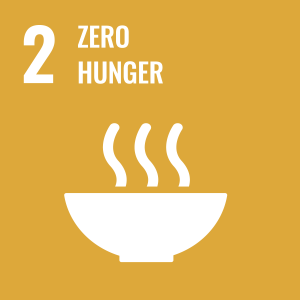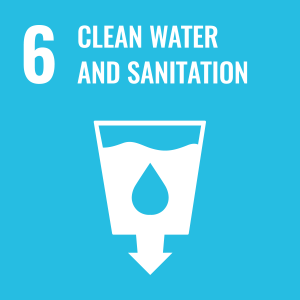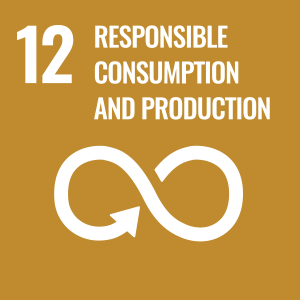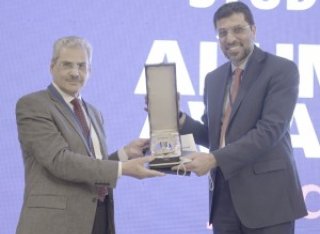
Dr Jonathan Chenoweth
Academic and research departments
Centre for Environment and Sustainability, School of Sustainability, Civil and Environmental Engineering, Institute for Sustainability.About
Biography
Jonathan Chenoweth is an associate professor in environment and sustainability and MSc Programmes Director in the Centre for Environment and Sustainability.
Jonathan’s conducts inter-disciplinary research on sustainable water and sanitation. He also researches on sustainable foods and diets. Some of his research projects apply Life Cycle Sustainability Assessment (LCSA) to quantify the environmental, social and economic impacts of products and services.
Jonathan has an Honours degree in Environmental Planning and a PhD in Environmental Management from the University of Melbourne. Prior to working at the University of Surrey Jonathan worked as a research fellow in the Middle East. He is a full member of the Institution of Environmental Sciences and a Chartered Environmentalist (CEnv).
University roles and responsibilities
- Programme Director of the MSc in Environmental Strategy
- Programme Director of the MSc in Corporate Environmental Management
- Programme Director of the MSc in Sustainable Development
News
In the media
ResearchResearch interests
Jonathan’s current research interests include:
- Assessing the environmental, social and economic impacts of national libraries
- Developing carbon footprint calculator for visitors economy
- Vegan meat and disruptive food technologies
- The water-energy-food nexus
- Institutional and policy dimensions of sustainable water resources management
- Sanitation and water service provision for peri-urban settlements in low income countries.
- Consumer attitudes to water supply services and the water industry.
- Sustainable Development and trends in the development and use of indicators of sustainability; indicators of sustainable natural resources development, particularly sustainable water resources management.
Jonathan has research funding from the Belmont Foundation and AHRC, ESRC and Innovate UK. Previously Jonathan has had research funding from the European Commission (FP6 and FP7), the European Union Water Initiative Research Area Network, Leverhulme Trust, EPSRC, and DfID. He is an associate editor of the Water Policy journal, the official journal of the World Water Council.
Research interests
Jonathan’s current research interests include:
- Assessing the environmental, social and economic impacts of national libraries
- Developing carbon footprint calculator for visitors economy
- Vegan meat and disruptive food technologies
- The water-energy-food nexus
- Institutional and policy dimensions of sustainable water resources management
- Sanitation and water service provision for peri-urban settlements in low income countries.
- Consumer attitudes to water supply services and the water industry.
- Sustainable Development and trends in the development and use of indicators of sustainability; indicators of sustainable natural resources development, particularly sustainable water resources management.
Jonathan has research funding from the Belmont Foundation and AHRC, ESRC and Innovate UK. Previously Jonathan has had research funding from the European Commission (FP6 and FP7), the European Union Water Initiative Research Area Network, Leverhulme Trust, EPSRC, and DfID. He is an associate editor of the Water Policy journal, the official journal of the World Water Council.
Supervision
Postgraduate research supervision
Jonathan supervises students in water resources management, sustainable food and diets, and environment and sustainability more broadly. He has supervised 11 PhD students to successful completion.
He is currently supervising five doctoral students:
-Robynne Jones: To what extent does investor and NGO engagement enhance corporate governance in the financial industry?
-Chris Medland: The effects of climate change on infrastructure resilience from the perspective of the household - How does infrastructural resilience across scales effect resilience at household scale?
-Kaixuan Wang: Exploring global impacts of UK protein import with multi-dimensional considerations
-Busola Lagoke: Investigating the Influence of Social Groups on Strengthening Community Flood Resilience
- Mattie Yeta: What is the contribution of natural capital accounts to national economies' valuation?
Teaching
I am module convenor for the ENG1099 Understanding Sustainability: Methods Tools and Skills 1, ENGM060 Environmental Science and Society modules. I also teach on the ENG1096 Regenerating Environments and Communities Fieldwork Trip, ENGM058 Life Cycle Thinking and the Circular Economy module, and the ENGL001 Sustainability module. In addition I run the MSc Dissertations module taken by Masters students on the MSc in Sustainable Development, the MSc in Corporate Environmental Management and the MSc in Environmental Strategy.
Sustainable development goals
My research interests are related to the following:




Publications
Passenger aviation carbon footprint calculators often lack breadth, accuracy, transparency, and communication effectiveness, leading to underestimations of environmental impact and mistrust. This study addresses these gaps by developing a comprehensive methodology that broadens scope and improves accuracy. It incorporates nitrogen oxides, water vapour, contrail-induced cloudiness, upstream emissions from in-flight services, and life cycle emissions from aircraft and airports, offering a complete carbon footprint assessment. Accuracy is improved through detailed modelling of flight distance, fuel consumption, and emissions allocation adjusted for passenger class, luggage, and cargo. Historical adjustment factors refine pre-flight estimates by integrating real-world variations. The tool outputs a full emissions breakdown by source, offering unparalleled granularity and clarity. Validated against over 30,000 historical flights, the historical adjustment factor model achieves ~0.5% mean squared percentage error and shows current methods underestimate emissions. This study sets a standard for aviation carbon footprint calculators by enabling transparent, dynamic assessments for industry stakeholders. A new aviation carbon footprint tool improves accuracy and transparency by incorporating nitrogen oxide, water vapor, and contrail impacts, life cycle emissions from aircraft and airports, and adjusting flight emissions with historical flight data.
Retailers can play an important role in facilitating a transition to sustainable diets in the UK. They have been implementing strategies aimed at helping customers make healthier choices and are now considering how to broaden this to include sustainability, which is a live discussion in the UK retail sector. Focusing on ‘less and better’ meat and dairy as a core component of sustainable diets, this study investigates retailer perceptions of sustainable diets and their strategies and challenges to provide and promote customer purchasing of ‘less and better’ meat and dairy. Results from a series of semi-structured interviews with senior health and sustainability professionals within the UK retail sector indicate that retailers have a diverse understanding of sustainable diets that seldom includes ‘less and better’ meat and dairy. Retailers are adopting a range of different strategies linked to ‘less and better’ meat and dairy – from improving the sustainability of their meat and dairy supply chains to influencing customer purchasing through ‘nudge’ interventions. While strategies related to ‘better’ meat and dairy are being adopted, no retailer is implementing interventions focused on reducing purchasing of meat products. The promotion of sustainable diets is seen by some retailers as a way of positively engaging with customers and improving brand loyalty, but there are external barriers to reducing purchasing of meat and dairy products that are beyond the direct control of the retailer.
The UK government is seeking new food trade partners post-Brexit, with a focus on international meat trade to ensure supply chain stability while minimizing economic, environmental, and social damages. A UK Meat Trade-centred World Input-Output Model (UK-MTWIO) is developed with an innovative RAS method to assess the multiple impacts of different meat import scenarios. The results highlight the interdependence of meat types within the UK agricultural sector and the effects on other countries. Environmentally, most scenarios show the potential for reducing GHG emissions in the global agricultural sector. As for animal welfare, the UK can get higher animal welfare performance under beef import scenarios but suffer animal welfare losses with other scenarios. These findings underscore the intricate relationship between environmental, economic, and animal welfare impacts of global food trade. Policymakers should take a comprehensive approach and collaborate with all trading partners toward a more ethical and sustainable future.
The impact of desalination plant discharges on local marine environments is a concern but can be partially mitigated by good plant design to rapidly dilute released brine. For some water bodies with restricted connections to the ocean further concerns have been raised as to whether large-scale desalination risks raising salinity levels of the water body as a whole. Here we assess whether the maximum likely desalination growth by 2050 around the Rea Sea and Gulf of Aqaba could raise salinity levels in these restricted water bodies. The cumulative effect of desalination on salinity levels in the Red Sea will be insignificant compared to natural evaporation. The cumulative effect of desalination on salinity levels in the Gulf of Aqaba may be detectable but within the bounds of natural variability. Careful design and management of the desalination plant outfalls will still be required if the ecological impacts of large-scale desalination are to be manageable.
The visitor economy is responsible for a substantial percentage of the global carbon footprint. The mechanisms used to decarbonize it are insufficient, and the industry is relying on carbon trading with substandard credits that allow businesses to outsource the responsibility to decarbonize. We aim to transform carbon markets, help finance climate investments, and support decarbonization strategies. We identify and define the problem, outline the components and their interactions, and develop a conceptual model to transform carbon markets. The new, blockchain-based Carbon Tokenomics Model rolls out a decentralized database to store, trade, and manage carbon credits, with the goal of enabling sustainable climate finance investment. We outline the criteria needed for an industry-wide carbon calculator. We explain the process needed to increase rigor in climate investments in the visitor economy and introduce a delegated Proof of Commitment consensus mechanism. Our inclusive and transparent model illustrates how to reduce transaction costs and how to build consumer and industry trust, generating much-needed investments for decarbonization.
The Water-Energy Nexus (WEN) is broadly defined as an integrated paradigm for efficiently managing water and energy resources. While several studies have investigated WEN from a resource efficiency perspective, little research has focused on governance and policy integration aspects. In this study, the level of understanding of WEN in Jordan is examined for the first time from the perspective of governance and public policy development. We explored institutional and policy integration gaps between the two sectors by mapping the water and energy policies in Jordan, and holding semi-structured interviews with the key policymakers and stakeholders. While the awareness of the nexus paradigm by officials is increasing, the level of knowledge about WEN varies across the sectors. As water and energy policies are formulated independently, there are no formal mechanisms for collaboration in the policy formulation and implementation processes, nor formal mechanisms for collaboration to guarantee policy effectiveness. Factors such as acknowledging shared understandings between different actors, setting flexible policy boundaries, and introducing specific capacity building plans at the institutional level are identified as critical to enable better WEN governance. Proposals from this study recommend adopting collaboration arrangements tailored to each sector’s needs and existing structures, and supported by effective enforcements to ensure an incremental and steady change toward inter-institutional coordination. A ‘multi-layer approach’ involving appropriate legal and policy frameworks, and adequate human and financial resources; essentially from private sector is suggested. Proposals from this study can help policymakers to effectively plan for joint water-energy investments for a more sustainable future.
Redevelopment of brownfield land is regarded as an essential component of the achievement of a sustainable urban regeneration, and is thus enshrined in a number of key urban policy frameworks (DETR 2000; ODPM 2004a). Brownfield redevelopment is considered to be de facto sustainable and presented as a headline sustainability indicator (DETR 1999). However, many examples exist where redevelopment of brownfield sites has not been sustainable, as it failed to assess the environmental, social, economic and physical impacts holistically, as well as to consider the long-term impacts of brownfield redevelopment projects (BRPs) in general. It is therefore important to develop and implement a Redevelopment Assessment Framework (RAF), that addresses sustainability throughout a site's life cycle of land use. Such a framework has been developed, and is discussed here. The RAF utilises sustainability indicators, while taking into account relevant existing UK planning evaluation processes and other sources of information, thus making it applicable in practice. The RAF embodies a participatory approach which offers greater communication and understanding between relevant stakeholders, and therefore also offers educational and communications benefits. A description of the RAF, a ctitical analysis of its intended use, and a discussion of benefits and potential barriers, are provided below. © 2005 EPP Publications Ltd.
While having basic access to water resources is clearly critical for survival, the extent to which water consumption contributes to wellbeing once basic needs have been met is not clear. In this study the link between household water consumption and wellbeing is assessed via a household survey conducted in southern England and actual water consumption data for the same households received from their water supply company. While the study revealed a few correlations, in general no link was found between actual water use and wellbeing. This suggests that high wellbeing is attainable regardless of low water use (assuming basic needs are met). In fact, when assessed through individual rather than composite measures of wellbeing, a weak but statistically significant link was shown between higher water use and some indicators of low wellbeing. Our results also show that actual water use appears to be unlinked to environmental attitudes, attitudes to water use or willingness to adopt water saving measures. This suggests that seeking a sustained reduction in water consumption via attitudinal change alone is unlikely to be effective.
Inadequate water, sanitation and hygiene (WASH) is a significant health burden in Rwanda. Although current approaches for improving water and sanitation provision to enhance health outcomes are often narrowly associated with monetary exchange, analysis of two informal settlements in Kigali (Gitega and Kimisagara) shows that households attempt to meet their water and sanitation needs through four interlinked exchange systems (market-based, command-based, culturally determined and non-market-based exchange systems). By focusing on existing social relations and exchange systems, sanitation practitioners may be able to foster and strengthen these interlinked water and sanitation marketing exchange systems embedding in the local context and local capabilities, and as a consequence improve the lives of the low-income communities of informal settlements.
Improving access to sanitation in slums in East Africa is a challenge. The 3ksan project has been working to identify the barriers and catalysts to sanitation in Kigali, Kampala and Kisumu. Household surveys in the informal settlements in these three cities have provided insight into the different levels of service provision and demand, access to financial services, and perceptions of enforcement of the regulations. This paper presents key results from the household survey, highlighting the different challenges in the three cities.
1 Issues of groundwater pollution in Africa Y. Xu Department of Earth Sciences, University of the Western Cape, Bellville, South Africa BH Usher Institute ...
There is growing coordination and cooperation between the water and energy sectors in Jordan. However, a water-energy nexus approach is seen as a useful management tool by the water sector more than it is by the energy sector. Strong political leadership will be required for a far-reaching adoption of the nexus approach. Increasing policy connections between Jordan’s water and energy sectors will lead to improved technical decision-making but major resource allocation decisions at the national level remain inherently political, regardless of how government departments and authorities are structured. Adopting a water-energy nexus approach in Jordan increases the potential for transboundary nexus cooperation with Israel and Palestine to exploit the potential of solar electricity production in Jordan and desalinated water production in Israel. Transboundary nexus co-operation in the medium term is desirable and even likely, but only to the extent that a break down in cooperation would not threaten the security of either country. Security concerns mean that such cooperation is likely to be limited in scale initially but via a nexus approach could build overtime to form a minority of water or energy supplies, occurring in parallel to other water and energy supply augmentation schemes. The case study of Jordan shows that adopting a water-energy nexus approach can assist in ensuring water and energy management occurs more on the basis of technical and economic criteria, however, major water and energy decisions remain political in nature and thus politics will continue to exert significant influence.
A questionnaire survey was circulated via internet-based sanitation forums to assess prevailing expert opinion about the appropriateness of low-cost sewerage for African cities. The questionnaire explored opinions about low-cost, solids-free sewerage (settled sewerage), low-cost, solids-transporting sewerage (simplified sewerage, condominial sewerage), and conventional solids-transporting sewerage. A total of 61 valid responses were obtained: 83 per cent of respondents considered low-cost sewerage to be ‘sometimes’ or ‘often’ appropriate for lower-income districts of African cities, versus 17 per cent who considered it ‘never’ or ‘very rarely’ appropriate. In contrast, only 44 per cent of respondents considered conventional sewerage to be ‘sometimes’ or ‘often’ appropriate. Thus low-cost sewerage is widely viewed as an important option to be given serious consideration during urban sanitation planning in African contexts. However, most respondents consider it appropriate only in certain specific situations, and many express concern about costs and long-term maintainability. Respondents’ comments concerning specific situations in which low-cost sewerage may be appropriate are discussed in detail
© 2015 Wiley Publishing Asia Pty Ltd. The purpose of this study is to examine the link between the reputational components of efficacy and moral reliability of institutions, and citizens' compliance with institutional recommendations. Research on bureaucratic reputations highlights the significance of positive political reputations based on credibility and legitimacy, but the impact of these components is not systematically isolated and studied. We draw insights from political psychology to move beyond a positive-negative valence-based approach of reputation, and highlight the different effect of efficacy and moral reliability components of reputation on citizens' cooperation, engagement in water saving activities, and levels of complaints. We use the Cypriot Water Authority as a case study and inquire how its institutional reputation influences Cypriot citizens' behavior regarding water use. Our data was collected via a representative national survey administered to a random sample of 800 Cypriots in the spring of 2009 and show that favorable perceptions of particular components of institutional reputation shape the levels of satisfaction with specific organizational outputs.
This study looks at the application of delayed action Passive Infrared (PIR) sensors in the control of water use for urinal flushing. In this we briefly review the literature on urinal controls before reviewing four different approaches to PIR urinal controls. Existing literature discusses some of the pros and cons of different types of urinal control. However, the literature does not consider the differences that occur within individual approaches, based on the way controls operate. This study was initiated at the University of Surrey during 2019 following a water saving audit, in an attempt to bring down one of their largest users of water. This paper therefore aims to identify the most effective way to reduce water consumption of urinal systems, through retro-fitting PIR control systems within the variety of settings across university campuses. This paper also reviews the different reductions achieved over periods of differing use, during term-time, holidays, COVID-19 lockdowns, and the 'new normal'. It found that grouped delayed action flushing was the most effective form of urinal control for reducing water use. It, achieved a 59-64% adjusted reduction during non-COVID-19 periods, and a 35% reduction against the control group during lockdowns saving 98,000 L/day on average across the study.
This paper analyzes how sanitation can be improved in the informal settlements of East African cities through a hybrid model. Qualitative research was carried out in eight settlements in three cities. Findings show that all cities apply a hybrid model (with some variation) when providing improved sanitation to their residents. Sanitation services were available in all cities, but there was no evidence of the state actively organizing a functioning sanitation market in Kampala or Kisumu. This implies that a hybrid model with a strong and committed developmental state is the right choice in the context of the informal settlements of East African cities.
Although research shows that acceptance, trust, and risk perception are often related, little is known about the underlying patterns of causality among the three constructs. In the context of a waterborne disease outbreak, we explored via zero-order/partial correlation analysis whether acceptance predicts both trust and risk perception (associationist model), or whether trust influences risk perception and acceptance (causal chain model). The results supported the causal chain model suggesting a causal role for trust. A subsequent path analysis confirmed that the effect of trust on acceptance is fully mediated by risk perception. It also revealed that trust is positively predicted by prior institutional trust and communication with the public. Implications of the findings for response strategies to contamination events are discussed. © 2013 Wiley Periodicals, Inc.
This study evaluated the performance of a new treatment method for greywater called the Drawer Compacted Sand Filter (DCSF). This is a modified sand filter design in which the sand filter is broken down into several layers approximately 10cm high, each of which is placed in a movable drawer that is stacked vertically, with each drawer separated by 10cm of space. This treatment unit is seeking to overcome the problems commonly found in traditional sand filter designs, such as clogging, emission of bad odours and need for a large land area to house the filter. Nine pilot DCSF units were operated at different locations in Jordan during the period of 2011-2013. Composite water samples from the inlet and outlets of the DCSF over a period of 18 months were taken periodically and tested for BOD5, COD, TSS, pH, EC and E.coli. A socio-economic study was conducted to evaluate the validity and feasibility of the DCSF. The results showed that DCSF removed 78-96% of BOD5 and COD and 69-98% of TSS. E.coli removal was various across the DCSF units, ranging from 1 log to 6 logs. The focus group discussion and the analysis of economic benefits showed that DCSF unit was acceptable and feasible treatment method for greywater with minimal maintenance requirements.
The purpose of this book is to present an overview of the latest research, policy, practitioner, academic and international thinking on water security—an issue that, like water governance a few years ago, has developed much policy awareness and momentum with a wide range of stakeholders. As a concept it is open to multiple interpretations, and the authors here set out the various approaches to the topic from different perspectives. Key themes addressed include: Water security as a foreign policy issue The interconnected variables of water, food, and human security Dimensions other than military and international relations concerns around water security Water security theory and methods, tools and audits. The book is loosely based on a masters level degree plus a short professional course on water security both given at the University of East Anglia, delivered by international authorities on their subjects. It should serve as an introductory textbook as well as be of value to professionals, NGOs, and policy-makers.
Small-scale and independent water providers serve up to fifty percent of the population in urban centers in many of the developing and less developed countries. However, they remain largely unrecognized and unregulated. This article argues, based on the public interest theory and two case studies of the price and quality of water by small-scale providers, that there is a compelling case for regulation of small-scale water provision. The human right to water imposes an obligation on states to regulate small-scale water supply market. It also means that governments should avoid regulation which does not have support in public interest theory and empirical facts as this might constitute violation of the right to water.
During the last two decades Oman has experienced rapid economic development but this has been accompanied by environmental problems. Manufacturing and agricultural output have increased substantially but initially this was not balanced with sufficient environmental management. Although agriculture in Oman is not usually considered a major component of the economy, government policy has been directed towards diversification of national income and as a result there has been an increasing emphasis on revenue from agriculture and an enhancement of production via the use of irrigation, machinery and inputs such as pesticides. In recent years this has been tempered with a range of interventions to encourage more sustainable production. Certain pesticides have been prohibited; there has been a promotion of organic agriculture and an emphasis on education and awareness programs for farmers. The last point is of especial relevance given the nature of the farm labour market in Oman and a reliance on expatriate and often untrained labour. The research, through a detailed stratified survey, explores the state of knowledge at farm-level regarding the safe disposal of pesticide waste and what factors could enhance or indeed operate against the spread and implementation of that knowledge. Members of the recently constituted Farmers Association expressed greater environmental awareness than their non-member counterparts in that they identified a more diverse range of potential risks associated with pesticide use and disposed of pesticide waste more in accordance with government policy, albeit government policy with gaps. Workers on farms belonging to Association members were also more likely to adhere to government policy in terms of waste disposal. The Farmers Association appears to be an effective conduit for the diffusion of knowledge about pesticide legislation and general awareness, apparently usurping the state agricultural extension service.
Scenario analysis suggests that by 2050 the population of Israel, the West Bank and Gaza Strip and Jordan will have grown from 17.2 million to between 21.1 and 38.5 million people. These population scenarios are compared to a range of water resource scenarios that consider the effect of climate change, a possible redistribution of the region's shared water resources as a result of a peace agreement, or the status quo. This scenario analysis shows that under all possible population-water scenarios combinations considered, the water resources of Jordan and Israel remain above the minimum threshold required for social and economic development. In the case of the West Bank, water resources may also remain sufficient for all population and climatic scenarios if the West Bank gains a greater portion of the shared water resources. In the Gaza Strip, however, desalination or water imports are required. Will the water resources of Israel, Palestine and Jordan remain sufficient to permit economic and social development for the foreseeable future? Jonathan Chenoweth -------------------------------------------------------------------------------- ABSTRACT Scenario analysis suggests that by 2050 the population of Israel, the West Bank and Gaza Strip and Jordan will have grown from 17.2 million to between 21.1 and 38.5 million people. These population scenarios are compared to a range of water resource scenarios that consider the effect of climate change, a possible redistribution of the region's shared water resources as a result of a peace agreement, or the status quo. This scenario analysis shows that under all possible population-water scenarios combinations considered, the water resources of Jordan and Israel remain above the minimum threshold required for social and economic development. In the case of the West Bank, water resources may also remain sufficient for all population and climatic scenarios if the West Bank gains a greater portion of the shared water resources. In the Gaza Strip, however, desalination or water imports are required.
Objective To explore changes in plant-based and meat product sales during and after implementation of a multi-component in-store intervention implemented by a major UK food retailer. Secondary objectives included exploring differences by store format and area affluence. Design The intervention increased the visibility, accessibility, affordability, and availability of a selection of plant-based products. Unit sales of plant-based and meat products during the intervention (January 2021) were compared with pre- (November 2020) and post-intervention (February & March 2021). Non-meat product sales were assessed as a control. Negative binomial mixed models were used to explore sales changes differences by store format or affluence. Setting The intervention was applied in a real-world supermarket setting during Veganuary. Participants Stores that applied the full intervention (n=154) were included for analysis. Weekly sales data for each store was obtained from the retailer. Results Average weekly unit sales of plant-based products increased significantly (57%) during the intervention period (Incidence Rate Ratio 1.52 [95% CI, 1.51-1.55]). Plant-based product sales decreased post-intervention but remained 15% higher than pre-intervention (IRR 1.13 [95% CI, 1.12-1.14]). There was no significant change in meat sales according to time period. The increase in plant-based product sales was greatest at superstores (58%), especially those located in below average affluence areas (64%). Conclusions Results suggest that increasing visibility, accessibility, affordability, and availability of plant-based products led to increased sales, with evidence of lasting effects. No significant changes in meat sales were observed. Variation according to store format and area affluence indicates targeted intervention approaches are needed.
This research compares and contrasts the physical and chemical characteristics of incinerator sewage sludge ash (ISSA) and pyrolysis sewage sludge char (PSSC) for the purposes of recovering phosphorus as a P-rich fertiliser. Interest in P recovery from PSSC is likely to increase as pyrolysis is becoming viewed as a more economical method of sewage sludge thermal treatment compared to incineration. The P contents of ISSA and PSSC are 7.2–7.5% and 5.6%, respectively. Relative to the sludge, P concentrations are increased about 8-fold in ISSA, compared to roughly 3-fold in PSSC. Both PSSC and ISSA contain whitlockite, an unusual form of calcium phosphate, with PSSC containing more whitlockite than ISSA. Acid leaching experiments indicate that a liquid/solid ratio of 10 with 30 min contact time is optimal to release PO4-P into leachate for both ISSA and PSSC. The proportion of P extracted from PSSC is higher due to its higher whitlockite content. Heavy metals are less soluble from PSSC because they are more strongly incorporated in the particles. The results suggest there is potential for the development of a process to recover P from PSSC.
The Millennium Development Goals included a target to halve the proportion of people without sustainable access to safe drinking water by 2015 – a right recognized as fundamental to human needs. Small independent water endors are often the only water supply option in peri-urban neighbourhoods in developing countries and fill a critical gap in the municipal system, but there is concern about the quality and price of their water. Such vendors need to be recognized and regulated due to their role in meeting basic water needs. This article reflects on the lack of regulation and discusses a recent multidisciplinary research project in Kenya and Ethiopia that considered whether there is a case for regulation of competition, price and quality. It concludes that recognizing small independent water vendors as part of a regulatory framework will result in increased access to water for the poor and assist in the realization of the MDGs; the right to water; and, intergenerational equity.
Water, sanitation and hygiene (WaSH) services are examined from the Political Economy Analysis (PEA) perspective in Rwanda. Through a participatory qualitative approach, the findings show that water and sanitation services have been relatively low on the political agenda in Rwanda. There is a shortage of qualified employees at both local and national levels who should be responsible for the WaSH sector. Other major PEA issues include limited accurate, reliable and timely WaSH data to inform decision-making, sustainability of WaSH services and ineffective decentralisation. A range of strategic entry points are suggested in this paper to address these PEA issues.
There is no common understanding of the minimum per capita fresh water requirement for human health and economic and social development. Existing estimates vary between 20 litres and 4,654 litres per capita per day, however, these estimates are methodologically problematic as they consider only human consumptive and hygiene needs, or they consider economic needs but not the effects of trade. Reconsidering the components of a minimum water requirement estimate for human health and for economic and social development suggests that a country requires a minimum of 135 litres per person per day. With all countries except Kuwait having much greater water resources than this, water scarcity alone need not hinder development. Given the steadily decreasing cost of desalination together with the relatively small amount of water required per capita to permit social and economic development, desalination should be affordable where necessary for all but the very least economically developed countries where local naturally occurring freshwater resources are insufficient and saline water is available.
The indicator of naturally available water resources per capita has become the standard index for measuring the degree to which a country is facing water scarcity and is often used to show a growing global water crisis. By simultaneously analysing the national development related data provided by the UNDP, and the water resources related data provided by the FAO, it is possible to test the validity of this index, its definitions of water scarcity, and the correlation of water scarcity with national development. This analysis suggests that the naturally available water resources of a country do not have a significant effect on the ability of that country to meet the basic needs of its population.
The Planetary Boundaries (PB) framework represents a significant advance in specifying the ecological constraints on human development. However, to enable decision-makers in business and public policy to respect these constraints in strategic planning, the PB framework needs to be developed to generate practical tools. With this objective in mind, we analyse the recent literature and highlight three major scientific and technical challenges in operationalizing the PB approach in decision-making: first, identification of thresholds or boundaries with associated metrics for different geographical scales; second, the need to frame approaches to allocate fair shares in the ‘safe operating space’ bounded by the PBs across the value chain and; third, the need for international bodies to co-ordinate the implementation of the measures needed to respect the Planetary Boundaries. For the first two of these challenges, we consider how they might be addressed for four PBs: climate change, freshwater use, biosphere integrity and chemical pollution and other novel entities. Four key opportunities are identified: (1) development of a common system of metrics that can be applied consistently at and across different scales; (2) setting ‘distance from boundary’ measures that can be applied at different scales; (3) development of global, preferably open-source, databases and models; and (4) advancing understanding of the interactions between the different PBs. Addressing the scientific and technical challenges in operationalizing the planetary boundaries needs be complemented with progress in addressing the equity and ethical issues in allocating the safe operating space between companies and sectors.
© 2015 Taylor & Francis Tourism products vary in their direct and indirect (supply chain) water use, as well as in their economic contribution. Hence, water-scarce destinations require a method to estimate and compare water use intensity (water use in relation to economic output) for different kinds of tourist products in order to optimise their tourism offering. The present study develops an original framework that integrates segmentation with an environmentally extended input–output (EEIO) framework based on detailed tourism expenditure data and tourism satellite accounts (TSAs) in order to quantify the total (direct and indirect) economic impact and water use for multiple tourism segments. To demonstrate the rigour of the methodology, it is applied to the eastern Mediterranean island of Cyprus. The results show that cheaper forms of tourism tend to have a significantly lower total water use and, depending on the economic impact indicator of interest, may have above-average economic contribution per unit of expenditure. The proposed framework provides a significant step towards achieving sustainable water use through destination-specific estimates of water use intensity which take into consideration segment-specific attributes. It is envisaged that this could eventually lead to customised interventions for diverse tourism market segments.
The impact of tourism activities on local water resources remains a largely understudied issue in environmental and sustainable tourism management. The aim of the paper is to present a simple methodology that allows an estimate of direct and indirect local water use associated with different holiday packages and to then discuss relevant management implications. This is explored through the creation of five illustrative examples of holidays to semi-arid eastern Mediterranean destinations: Cyprus (2), Turkey, Greece and Syria. Using available data on water use associated with different forms of travel, accommodation and tourist activities, indicative water footprints are calculated for each of the illustrative examples. Food consumption by tourists appears to have by far the most significant impact on the overall water footprint and this aspect of water use is explored in detail in the paper. The paper also suggests a way of employing the water footprint methodology along with import/export balance sheets of main food commodities to distinguish between the global and local pressure of tourism demand on water resources. Water resource use is likely to become an increasingly important issue in tourism management and must be considered alongside more established environmental concerns such as energy use, using methodologies that can capture direct as well as supply chain impacts.
The development over time of the water supply and sanitation sectors in four countries is analyzed to reveal the changing role of the private sector. In some cases, local, small-scale private water supply and sanitation systems have been able to develop progressively into large-scale official systems, which may later be privatized. In other cases, foreign capital has been more significant in the development of modern water supply and sanitation systems, particularly where privatization has occurred much earlier in the national development process. In much of the developing world, domestic water supply and sanitation is dominated not by the official water supply and sanitation companies but by independent operators who function without subsidies but with enormous variability in terms of quality of service and prices offered. However, they are constrained generally by the absence of appropriate institutional and legal frameworks, including the lack of independent regulatory authorities. There is a need, where appropriate, to continue to encourage large-scale private sector involvement in the official water supply sectors of the developing world. At the same time though, it is only by promoting policies that also further the development (where appropriate) of the independent water supply and sanitation providers that access to water supply and sanitation services can be maximized since better use of local resources in many developing countries, both local human resources and capital, provide a key means for improving access to water supply and sanitation.
The terms green infrastructure and natural capital are interrelated. Natural capital as a concept is focused upon environmental assets which can provide services, either directly or indirectly to humans; it emphasizes the benefits humans obtain from the natural environment. Green infrastructure is a concept with a wide range of definitions. The term is sometimes applied to networks of green open spaces found in or around urban areas. In other contexts green infrastructure can describe alternative engineering approaches for storm water management, with co-benefits of temperature control, air quality management, wildlife habitats and/or recreation and amenity space. No environments are completely free of human influence and therefore no environments are entirely natural. Rather, there is a spectrum of degrees of ‘naturalness’ ranging from environments with minimal human influence through to built environments. A trio of case studies presented herein illustrates how green infrastructure projects are a practical application of the natural capital concept in that they seek to preserve and enhance natural capital via a management approach which emphasizes the importance of environmental systems and networks for the direct provision of ecosystem services to human populations. Natural capital forms critical components of all green infrastructure projects.
This article analyses sanitation markets in the informal settlements of three case study cities, namely Kigali (Rwanda), Kampala (Uganda) and Kisumu (Kenya), to identify how sanitation markets in East Africa can be made to function more effectively. It is based on a mixed method approach where 1794 households from Kigali, 1666 households from Kampala and 1927 households from Kisumu were surveyed. This was complemented by qualitative research involving 83 focus group discussions, 99 interviews and 3 deliberative forums. Findings reveal similarities and strong differences between the cities in terms of sanitation markets. While construction and emptying services are more available in Kampala and to lesser extent in Kisumu, organic solutions are mostly available in Kigali. However, the purchase of products and services is generally low. One of the reasons is that households are provided with products they do not want to buy. The sanitation intervention should be focused on the households rather than the suppliers of sanitary products. This involves understanding consumers' needs, desires, habits and the circumstances required for a facility to be acceptable and meet the needs of users rather than what fits the supplier. •To understand the factors that might predict sanitation improvements, binary logistic regression was used.•One way to address sanitation problems is for sanitation markets to function effectively.•There is a mismatch between demand and supply of sanitation products.•The sanitation intervention should be focused on the households rather than the suppliers.
Policy makers are now re-aligning their thinking towards demand-side management (DSM), where for the industrial sector specifically, strategies have been emphasising water consumption reduction through conservation, increased efficiency, and wastewater recycling. Although DSM-based strategies have been seen as a viable option to delay the need for large capital investment and to avoid irreversible environmental impact, their implementation at a large scale have been largely unknown as is implementation has generally been reported at a small-scale. As such, this research attempts to assess the effectiveness of implementation of decentralised wastewater reuse facilities in industrial parks as a DSM-based strategy targeted at the manufacturing sector. The research first assessed the vulnerability of three reservoirs in Selangor-namely Semenyih, Klang Gates, and Langat dam-against water deficiency events using a modelling approach to analyse their: i) reliability, via the use of an inflow-demand reliability index, and ii) resilience, through a water supply resilience index. Total potential potable water savings were then estimated for all industrial parks in the area served by each reservoir and subsequent potable water treatment plant. The impact of the potential water savings through reuse of wastewater in industrial parks within an overall water supply system was then evaluated. The feasibility of this DSM-based strategy was assessed in terms of its technical, economics, and environmental impact. Four treatment trains corresponding to the two cases of i) potable and ii) non-potable reuse were assessed in terms of their removal efficiencies necessary to comply with the current potable and non-potable water quality standards. The financial cost of each treatment train was determined for both capital and operational costs, while the environmental assessment was assessed using a Life Cycle Assessment (LCA) approach based on several environmental impact categories. Findings for the three dams indicated varying level of vulnerability, with Klang Gates dam being the most vulnerable, while Semenyih the least. For Klang Gates and Langat dams, the resultant IDR and WSR indexes achieved similar conclusions; both indices resulted in almost constant negative values for both dams, suggesting that an effective DSM-based strategy could possibly delay the need for implementation of an SSM strategy. For Semenyih dam, it was observed that the system is approaching system vulnerability, where lower IDR and WSR values were observed in the later years as compared to historical scenarios. Here, it can be hypothesised that a well-planned DSM-based strategy might eliminate the need for a SSM strategy. It was found that there was minimal number of industrial parks within the Klang Gates water supply area, further reducing the feasibility of wastewater reuse to reduce the vulnerability of this WSS. Conversely, it was estimated that, for Langat and Semenyih WSS, approximately 308,903 and 430,281 m3/month of water consumed by the premises within the identified IPs. This translates to approximately 266,430 and 374,009 m3/month of water savings if 90% of the total demand was discarded as effluent, and treated at 95% recovery rate. The savings calculated for this reuse option could contribute to a savings of 5.5% (8.8 MLD) and 12.2% (12.47 MLD) for the Langat and Semenyih dam respectively. These accumulated savings had a different impact on each dam's vulnerability. For the Langat dam, recalculation of the IDR and WSR values with the savings indicated little change to the system's overall vulnerability. In contrast, recalculations for the Semenyih dam resulted in positive changes for the WSR specifically, indicating reduced vulnerability of the system. The feasibility of four treatment trains corresponding to both reuse options for their technical, financial, and environmental dimensions were considered. The general findings in all three dimensions reinforced the option of non-potable reuse, specifically the NP-1 treatment train, which resulted in the lowest cost while providing the highest technical capability to remove contaminants from the industrial wastewater to meet both non-potable and potable water reuse standards. Additionally, from the environmental perspective, the resultant water for reuse had a lower human toxicity impact without an additional blending requirement, though this produced a higher terrestrial eco-toxicity impact due to the contaminants removal to landfill. On the other hand, it was also illustrated via this research that the additional financial resources, institutional reconfiguration of existing water service industry, as well as current awareness of the industrial players itself will limit the effective implementation of the identified strategy. As such, it was concluded that, although the use of industrial wastewater for manufacturing sector is technical, financial, and environmental feasible, its deployment however, is improbable against the current organizational structure and current awareness of the users. Includes bibliographical references
To enable a transition to a more sustainable food future, it is crucial policymakers consider and address livestock production and meat consumption holistically. The concept of ‘less and better’ meat and dairy offers an alternative approach to industrial livestock production. This study explores perspectives of UK stakeholders engaged in political advocacy and implementation on policy priorities and specific policy measures aimed at facilitating a transition to ‘less and better’ meat in the UK. 16 UK experts on food and farming from the research, civil society, business and farming sectors were interviewed. Thematic analysis was conducted to identify convergence and divergence on views related to policy priorities and the potential for impact, political feasibility and unintended consequences of specific policy measures aimed at increasing the sustainability of livestock production or reducing meat consumption. Experts agreed on policy priorities but held divergent views on the potential for impact of specific policy measures. Economic structures including incentives, disincentives and food prices were highlighted as having the greatest influence over meat production and consumption practices.
Scenario analysis suggests that by 2050 the population of Israel, the West Bank and Gaza will grow from its current 10 million to between 14 and 28 million. The scenarios developed are compared to available water resources and assessed for their viability. With all scenarios, except very high population growth in the context of inadequate co-operation between Israel and Palestine, the water resource needs of the entire population can be met. The analysis suggests that water need not be an obstacle to peace or economic development in the region.
The SPREE Country Feasibility Study is the key deliverable for Work Package (WP) 7. The objectives of WP7 are: • To test the identified Servicizing systems1 and their impacts on achieving absolute decoupling and social benefits using three sector specific models with local country conditions; • To assess the feasibility of pursuing Servicizing opportunities and anticipated policy outcomes for the different partner countries; • To set the ground for the preparation of the more general Policy Packages using the insights from qualitative assessment, models simulations, and sensitivity analysis.
Purpose: The purpose of this paper is to examine the impact of a range of different travel and tourism options, and quantifies the carbon-dioxide emissions resulting from international vacations, breaking down emissions categories into those resulting from transport, accommodation and recreation. Design/methodology/approach: The paper uses summary data to review a range of possible vacation scenarios and examines their relative carbon-dioxide emissions in order to compare the relative climatic impact of different forms of tourism and vacation options. Findings: The paper concludes that intercontinental flights and cruise ship travel are particularly carbon-intensive, which suggests that these two forms of tourism will be particularly vulnerable to any policy initiative to curb or price carbon emissions. Ends by considering whether climatically responsible international tourism is possible, and outlines some low-carbon options. Originality/value: The paper relates data on carbon emissions to the implications for tourism arising from climate change. © Emerald Group Publishing Limited.
Models approaching consumer expectations of their water supplier from a risk perspective suggest that consumers primarily and overwhelmingly want safe drinking water supply. In this study consumer preferences in the water sector are investigated in two contrasting case studies: Cyprus, where there have been significant quantity and continuity of supply issues, and Riga, where there have been water quality issues. While water quality is undoubtedly the main priority of water consumers in Riga, in Cyprus consumers indicate that they prioritise a more reliable service even though many are sufficiently dissatisfied with water quality that they do not drink the tap water. The analysis of consumer attitudes in the two case studies suggests that when water supply is unreliable, reliability takes precedence; once it is reliable quality issues come to the fore.
Facilitating the adoption of more sustainable food behaviors is key in order to reduce pressure on nature and improve public health. Food businesses that interact directly with consumers are well placed to enable a positive change in food behaviors. The present study evaluates the effectiveness of a 9-week multi-component behavioral intervention implemented by a large UK food retailer. Three food behaviors were explored: meat consumption, food waste and scratch cooking. Evaluation methods comprise of surveys issued pre-intervention, at intervention-end and at delayed follow-up (3 months after intervention end), and focus groups where participants were divided according to life-stage (pre-family, family, retired). Results show the intervention mitigated individual barriers to change and had a positive impact on awareness, intention and behavior which lasted beyond intervention-end. Participants reported reducing their meat consumption and food waste and cooking more frequently from scratch. Findings indicate that the online community, ‘ask the expert’ videos and product samples were the most impactful intervention components, while recipes and cook-alongs were less effective. This study provides an effective and feasible intervention which could be implemented and scaled by food companies. While behavioral interventions offer a positive opportunity for companies to drive consumer behavior change, structural and cultural changes to the food environment will be needed to facilitate long-term change at scale.
The article introduces an integrated market-segmentation and tourism yield estimation framework for inbound tourism. Conventional approaches to yield estimation based on country of origin segmentation and total expenditure comparisons do not provide sufficient detail, especially for mature destinations dominated by large single-country source markets. By employing different segmentation approaches along with Tourism Satellite Accounts and various yield estimates, this article estimates direct economic contribution for subsegments of the UK market on the Mediterranean island of Cyprus. Overall expenditure across segments varies greatly, as do the spending ratios in different categories. In the case of Cyprus, the most potential for improving economic contribution currently lies in increasing spending on “food and beverages” and “culture and recreation.” Mass tourism therefore appears to offer the best return per monetary unit spent. Conducting similar studies in other destinations could identify priority spending sectors and enable different segments to be targeted appropriately.
Household water consumption in most high-income countries is well above that required to meet basic needs, but consumption levels vary significantly between these countries. In those where consumption levels are at the lower end of the spectrum as a result of improved efficiency of household appliances, scope for further significant reduction from improvements in efficiency alone is limited. Product-service systems are suggested as a means of significantly further lowering water consumption, there being a diverse range of such systems which could be developed in the water sector. In the theoretical analysis described here servicized greywater recycling systems are shown to have real potential in that they can help overcome maintenance and water quality issues associated with such systems. If servicized greywater recycling systems were introduced in all new-build dwellings in England and also when making major bathroom renovations, an absolute decoupling of population and economic growth, and household water consumption would be possible as a result of savings in mains water consumption.






